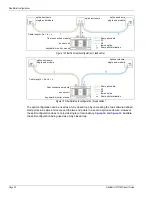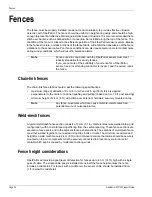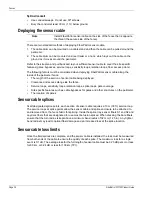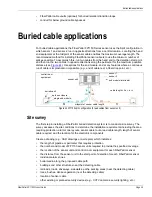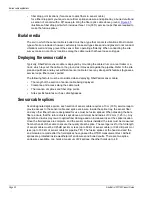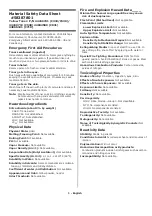
Fences
Page 30
FiberPatrol FP1150 Product Guide
Protecting masonry walls and buildings
If some, or all, of the perimeter is comprised of masonry walls or buildings, FiberPatrol sensor
cable can be installed along the outside edge, and if necessary, the inside edge of the structure to
protect against climb over intrusions. In this case, custom P-brackets are used to fasten the sensor
cable to the structure so it extends slightly outside and above the structure. A P-bracket is installed
every 50 cm (20 in.) along the structure to hold the sensor cable in place.
For a masonry wall, the recommended sensor cable configuration uses 2 cables. One along the
outside edge and one along the inside edge.
Sensitivity loops for heavier gauge posts
Use sensitivity loops at all corner posts, terminal posts and tension posts on the fence. The
sensitivity loops provide additional sensor cable for areas that typically produce lower levels of
fence noise. The length of cable required for a sensitivity loop can be calculated using this formula:
3 X (fence height - 60 cm) + 90 cm = sensitivity loop cable length requirement.
For example, on a 2.4 m (8 ft.) fence, the service loop would go down 90 cm, then up 1.8 m, then
down 1.8 m, and up 90 cm over a horizontal length of 90 cm.
Note
FiberPatrol functions as a contact sensor when it is installed on
masonry walls and buildings.
Figure 29 Protecting a masonry structure along the perimeter
Figure 30 Protecting a masonry structure along the perimeter
fence-mounted
transition loop
fence-mounted
transition loop
P-brackets 50 cm (20 in.)
spacing along edge of wall
respect min. turn radius
at corners
dual sensor cables
outside and inside edges
single sensor cable
on outside edge





